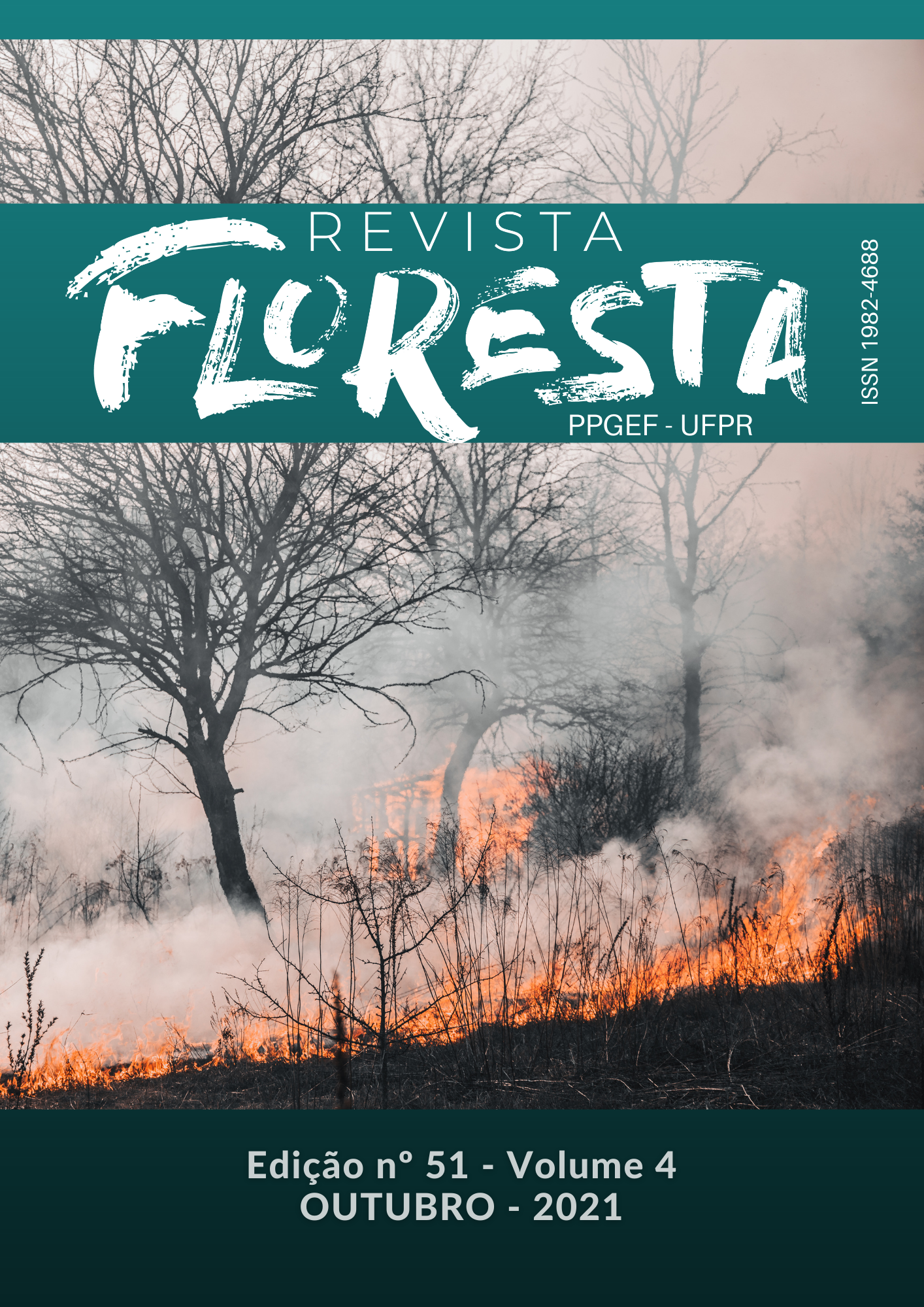SITE INDEX IN EUCALYPTUS STANDS APPLYING ORDINARY KRIGING: AN APPROACH WITH DIFFERENT MODELS AND METHODS OF CLASSIFICATION
DOI:
https://doi.org/10.5380/rf.v51i4.75215Palavras-chave:
Productive capacity, Spatial dependence, Geostatistics, ModelingResumo
The objective of this work was to evaluate the efficiency of models and methods to obtain the site index, associated with ordinary kriging, to classify productive capacity in eucalyptus stands. Thus, the site quality was performed considering the traditional modeling in clonal stands (2,119 hectares) located in Minas Gerais state, Brazil. 170 plots of 400m2 were randomly allocated, representing a sampling intensity of 0.32%. The dominant height of trees (Assmann) was measured at 24, 36, 48, 60, 72, and 84 months. The site index (S) was estimated by the guide curve and algebraic difference methods, using the models of Schumacher, Chapman and Richards, and Bailey and Clutter. 136 plots were used in the fit and 34 plots in the predictive validation. The spatial dependence of site index was evaluated by experimental semivariogram and adjustment of exponential, spherical, and gaussian models. After confirming the spatial dependence, ordinary kriging was performed to spatialize the site index. For the predictive validation, the dominant height values at 72 months were used. The algebraic difference method provided excellent estimates of site index, which showed spatial dependence in all adjustments, from moderate to strong. In most cases, the gaussian model was the most accurate. It is concluded that the algebraic difference method was more efficient and the site index showed strong spatial dependence at all ages, regardless of the model used. Thus, regression models for site index estimation can be used in combination with ordinary kriging techniques.
Downloads
Publicado
Como Citar
Edição
Seção
Licença
Direitos Autorais para artigos publicados nesta revista são do autor, com direitos de primeira publicação para a revista. Em virtude da aparecerem nesta revista de acesso público, os artigos são de uso gratuito, com atribuições próprias, em aplicações educacionais e não-comerciais.A revista, seguindo a recomendações do movimento Acesso Aberto, proporciona acesso publico a todo o seu conteudo, seguindo o principio de que tornar gratuito o acesso a pesquisas gera um maior intrcambio global de conhecimento.
Conteúdos do periódico licenciados sob uma CC BY-NC-SA 4.0



